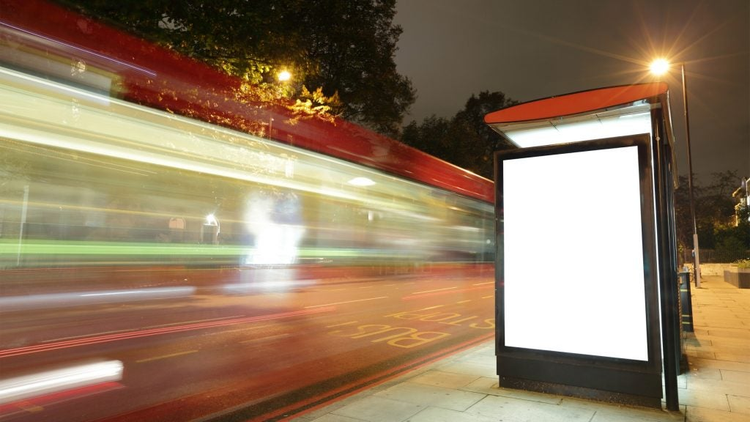5 ways to get inspired on your daily commute

We’ve all experienced it – that all-too-frequent brush with boredom on the journey to or from work. But inspiration can strike when you least expect it. To help keep you occupied on your next journey, I’m sharing a few things to look out for which might spark some ideas for your next creative project.
- Sketch your surroundings
Singer Ella Eyre revealed last year that the inspiration behind her debut album came from a daily three hour commute from her home in West London to the BRIT School. Ella said that “rather than being on my phone, I liked to observe…” and that “I would be drawing people or writing anecdotes, stories, comments, lines. They turned out to be my main ideas for my album.”
This is great advice. Instead of staring at your phone or at the floor avoiding eye contact with fellow commuters, why not observe your surroundings? A great way to interpret what’s going on is through sketching in a notepad. You’ll appreciate the complexity of basic structures such as a pair of glasses or a rolled-up magazine poking out of someone’s bag. Still-life sketching is also great practice for your everyday design skill.
For some drawing tips on-the-go, check out artist Dawood Marion-Sekhem’s video “Drawing on Public Transit.” If you like to doodle on your mobile or tablet, the Adobe Photoshop Sketch app lets you use natural drawing tools such as pencils, pens, markers and watercolour brushes to get all the textures and blending effects you’d get on paper.
- Critique existing work along the way

You’ll be surprised at the number of creative works which surround your every move en route – whether you’re driving, walking or taking the train. You just need to look. That billboard which made you laugh while waiting on the train platform. What made it so good?
Try to understand the thought processes behind advertisements and signs that inevitably make up your commute. If you didn’t like an advert, why didn’t you like it? How would you improve it? The key to critiquing is not just to analyse but to suggest improvements.
Pay particular attention to the typeface and colour choices, which will greatly impact the overall “feel” of the advert, along with the amount of whitespace. Some great tips on advertising analysis are available here.
- Keep an eye out for street art
Image credit: Kentish Towner/Stephen Emms
Art can pop up in the most unexpected places. A great example of this is one of my favourite sources of inspiration – street art – that, often done without consent, can be found everywhere. If you don’t lift your gaze from road level, you risk missing out on beautiful work sitting right in front of you. If you don’t lift your gaze from road level, you risk missing out on beautiful work sitting right in front of you.
It’s not just the famous street artists, the likes of Banksy, who can provide inspiration. The picture above from Kentish Town, North London, is from an unknown artist but acts as an unofficial logo for the area and gets regular face-lifts. One thing you might notice is how different areas have a certain style or pattern of work. I like to think about why one area might prefer a certain look and see how far the trend has spread.
For a directory of new street art and collection exhibitions, be sure to check out Street Art London.
- Start listening to podcasts
Image credit: the Tate Museum
Podcasts are audio programmes available to download onto smartphones with a huge variety of topics and lengths. Art galleries in the UK such as the Tate offer a wide catalogue of podcasts on artists new and old, all available to download for free.
A number of current affairs journals such as The New Yorker also offer content to download on topics spanning political debate, art wrap-ups and cultural trends, 99% Invisible is a fantastic design and architecture podcast (I’m a supporter – I love it) while RadioLab will get you thinking about all kinds of things; The Deeply Graphic Design Podcast talks through issues facing modern designers from both practice and business perspectives.
These are a fantastic way to improve your knowledge and awareness in a passive way – simply plug in your headphones and listen.
Set yourself a target of listening to a certain number of podcasts in a week. Even if it’s only one or two. That way you won’t simply download dozens of different ones and inundate yourself with content which won’t get listened to, and it might help spark some new ideas for that new brief you’re working on.
- Practice breaking down objects into simple shapes
Almost anything you draw from observation can be broken down into the basic geometrical shapes of circles, squares and triangles, along with their 3D equivalents. Developing your understanding of these shapes and noticing them in everyday objects is a great way to improve your understanding of composition and form.
For example, a rain-soaked train window can be seen as a square covered in circles in 2D, while in 3D it will look like a slender cuboid with tiny hemispheres rolling down it. So next time you find yourself stuck on a boring journey, glance around at the form of your surroundings and keep a note of any inspiring shapes or unusual patterns.
Once you understand the basics of geometric composition, tools such as Adobe Illustrator Draw allow you to easily use vector drawing tools to turn an idea or inspiration into a gorgeous design.
___________________________________________________________
As always, if you think I’ve missed anything or want to share your own inspirational commute stories, do let us know in the comments section below.